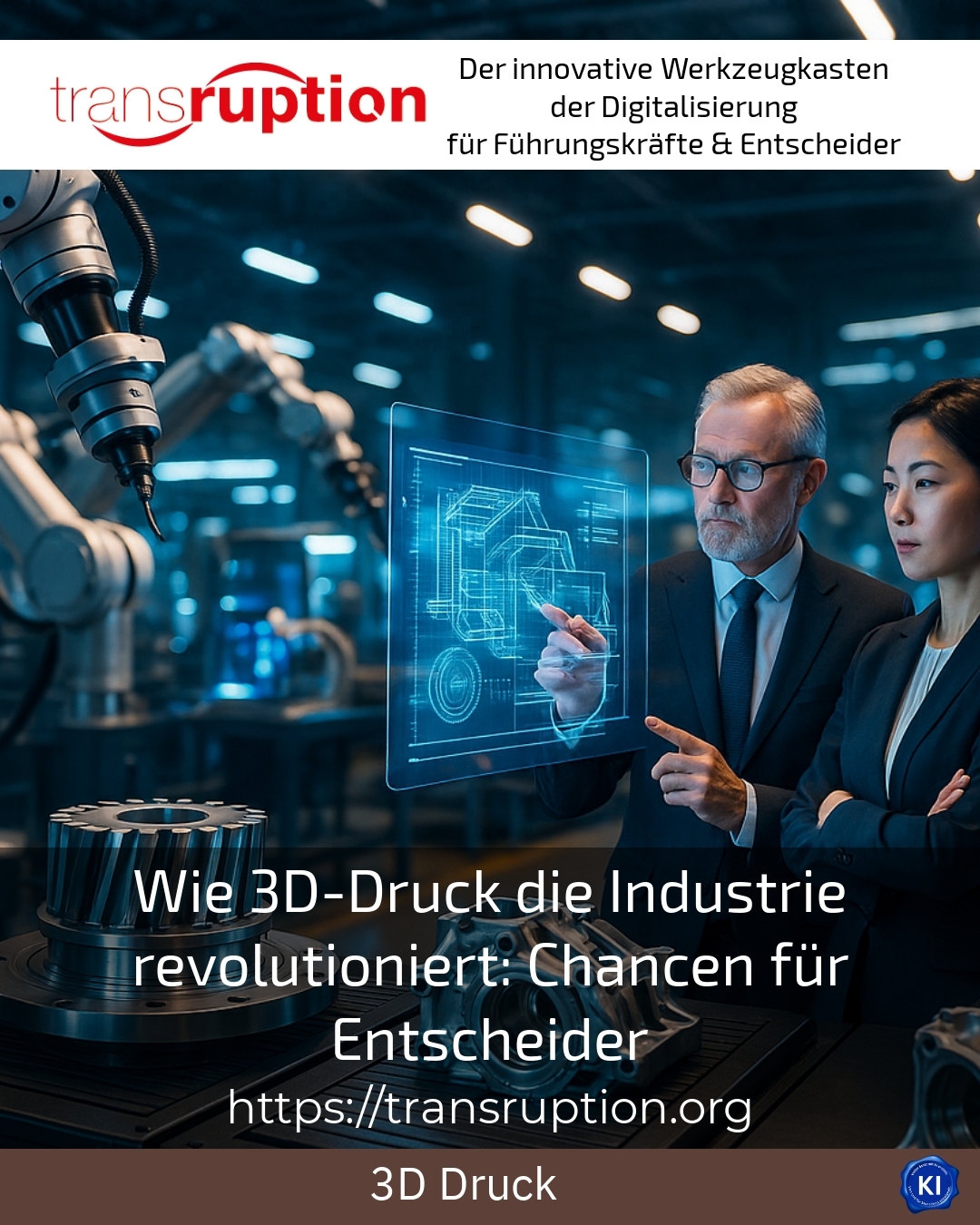3D printing has become a key technology in industry, making processes more flexible and efficient. Whether in the development of new products or the production of complex components, 3D printing opens up numerous opportunities for innovation and competitive advantages for decision-makers. Additive manufacturing helps companies to react more quickly to market requirements and fulfil individual customer wishes.
Flexibility and efficiency through 3D printing
The ability to build up objects layer by layer allows the production of complex geometries that are difficult or impossible to realise using conventional processes. This provides significant advantages in the automotive industry, for example, where lightweight yet stable components are produced that reduce fuel consumption and increase performance. The production of spare parts is also significantly faster and more cost-efficient thanks to 3D printing, as warehousing can be reduced or eliminated. It is also possible to produce small batches or individual parts economically, which is particularly attractive for specialised mechanical engineering companies.
A practical example: in the aerospace industry, a manufacturer produces lightweight components that significantly reduce fuel consumption. This allows aircraft to be operated more efficiently and sustainably, which also has a positive impact on operating costs. At the same time, additive manufacturing enables a faster supply of spare parts, which minimises downtimes.
Small and medium-sized companies also benefit if they can manufacture customised tools, assembly devices or prototypes flexibly and without long delivery times. This improves their competitiveness in the long term.
Innovative applications and industry examples for 3D printing
The areas of application for 3D printing have long spanned many industries. In mechanical engineering, complex components are manufactured with high precision. Thanks to 3D printing, a manufacturer of control units was able to reduce costs by 80 per cent by producing high-quality housings directly.
In the medical field, 3D printing supports the production of custom-fit shoe insoles or customised prostheses. With the help of digital designs, such products can not only be produced more quickly, but also customised to the specific needs of the patient, which increases acceptance and wearing comfort.
The construction industry is also increasingly utilising additive manufacturing. Elements or entire building parts can be custom-printed, which shortens construction times and reduces costs. This opens up new design possibilities and supports sustainable construction.
BEST PRACTICE at the customer (name hidden due to NDA contract) A leading automotive supplier used 3D printing to realise prototypes of lightweight components in just a few days instead of weeks. This significantly accelerated the development cycles and made it possible to optimise the vehicle design in a timely manner.
BEST PRACTICE at the customer (name hidden due to NDA contract) A machine manufacturer produces specific assembly aids and tools using 3D printing, which not only increases flexibility, but also brings cost savings of 30 per cent compared to conventional production.
BEST PRACTICE at the customer (name hidden due to NDA contract) A medical technology company implemented 3D printing for customised implants that are precisely tailored to patients. This has significantly improved the quality and tolerability of these products.
Challenges and potential for decision-makers
Despite the advantages, there are also challenges to consider. Quality control and material properties must be carefully checked in order to fulfil industry requirements. Expertise is also required to develop suitable designs for additive manufacturing and to optimally control processes.
Decision-makers should see 3D printing as a companion for projects and innovation processes. The technology helps to provide impetus and find solutions that increase flexibility and efficiency. The integration of 3D printing often requires a cultural opening in the company, as traditional processes are changed.
A valuable tip is to start with small pilot projects and systematically gather experience. In this way, risks can be minimised and the added value expanded step by step. Collaborations with specialised service providers also offer opportunities to expand expertise and develop new applications.
3D printing as a strategic competitive advantage
Companies that integrate 3D printing into their production and development processes create a clear competitive advantage. The shorter development times, the possibility of customisation and the cost savings for small series have a positive long-term effect on innovation and market position.
For example, an energy company has reduced the time it takes to repair worn power plant components from almost a year to just a few weeks thanks to additive reworking. This not only saves costs, but also ensures security of supply. Other companies report accelerated innovation cycles and new business models that were only made possible through the use of 3D printing.
My analysis
3D printing is evolving from a prototyping tool to a key technology in industry. For decision-makers in particular, it opens up a wide range of opportunities to make processes more flexible, reduce costs and bring innovative products to market faster. Despite some technical and organisational challenges, the added value created by customised components, shorter delivery times and the linking of digital planning with physical production outweighs the disadvantages. Targeted support for 3D printing projects, for example through transruption coaching, helps companies to implement these impulses effectively and utilise the technology as a strategic competitive advantage.
Further links from the text above:
3D printing: the silent revolution
Areas of application for 3D printing
3D printing in industry & business
30 applications with 3D printing - simple examples
Five industries that benefit most from 3D printing
For more information and if you have any questions, please contact Contact us or read more blog posts on the topic TRANSRUPTION here.
















